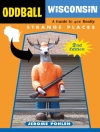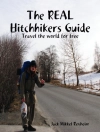Traverse 28 carefully crafted backpacking trips to some of the most magnificent landscapes in Wyoming.
A person could spend several lifetimes in Wyoming and barely scratch the surface of its wilderness areas and wide open spaces. Backpackers can find complete solitude and explore some of North America’s most amazing scenery—not to mention Yellowstone and Grand Teton national parks, the Beartooth and Bighorn mountains, and more.
Backpacking Wyoming details the premier backpacking opportunities in the Cowboy State. Award-winning author Douglas Lorain describes 28 trips (plus 9 bonues ones) with carefully crafted, field-tested itineraries, which range from two days to two weeks. Wander a geyser basin and wildflower-filled meadows. Explore the largest glaciers in the American Rockies, and admire the awesome peaks around Cirque of the Towers. Experience countless beautiful high-elevation lakes and abundant wildlife, including elk, pronghorns, bears, moose, and even wolves.
Inside you’ll find:
- 28 top backpacking trips throughout the state
- Comparative ratings for scenery, solitude, and difficulty
- Trail mileage, elevation gain, and days on the trail
- Highlights, trip itineraries, and more
- 9 additional recommendations for backpacking trips
From hidden treasures to world famous destinations, these carefully chosen routes offer mountain scenery and colorful geologic marvels. No matter which trip you pick, you’ll find unforgettable adventure in some of America’s most spectacular backcountry.
Inhaltsverzeichnis
The 28 backpack trips:
1 Bighorn Pass & Sportsman Lake Loop
Introduction: Some of the best mountain scenery in Yellowstone National Park is in the Gallatin Range, a cluster of 10, 000-foot peaks filled with snowy summits, colorful wildflowers, sparkling lakes, and all the other attractions typically found in the mountains of the American West. This being Yellowstone, however, these mountains also boast a higher concentration of wildlife than what you typically encounter in places not protected in a national park. So not only can hikers enjoy the usual wildflower-covered meadows and impressively tall peaks, they will also probably see elk, bison, moose, and possibly bears and wolves, along with many smaller animals.
2 Black Canyon of the Yellowstone River
Introduction: The Black Canyon of the Yellowstone River is a generally overlooked gem in a national park that is chock full of precious stones. Since they are at the lowest elevations in the park, the trails here open earlier and stay open later than most other park trails, thus providing excellent ’shoulder season‘ hiking. And although there are no geysers or other thermal features to amaze you, the scenery is quite dramatic featuring a powerful river, tall canyon walls, and plenty of wildlife, especially in the spring before the animals move up to the high country. The most popular itinerary is to do this trip as a one-way mostly downhill hike from the Hellroaring trailhead with an exit at Gardiner, Montana. This scenario, however, requires two cars and misses the views along the lovely Rescue Creek Trail, so I recommend a loop trip from the lower trailhead. This provides a better variety of scenery and still hits all the best parts of the Yellowstone River Trail, especially when you include a dayhike through the upper reaches of the Black Canyon.
3 Lamar River to Hoodoo Basin
Introduction: Although internationally famous and visited by approximately 3 million people every year, there are large parts of Yellowstone National Park (in fact most of the park’s vast acreage) that see almost no people. The trip up the Lamar River and Miller Creek trails to Hoodoo Basin in the northeast part of Yellowstone Park is a good example. But while people are scarce, animals definitely are not. In fact, critters, both large and small, seem to be everywhere. In my tens of thousands of miles of backpacking throughout western North America, I saw more wildlife on this hike than anywhere else. Bison are the most common large mammal (you could easily see hundreds), but you can also expect to encounter elk, pronghorns, deer, black bears, grizzly bears, moose, coyotes, and possibly wolves.
4 Shoshone Lake Loop
Introduction: As the largest backcountry lake in the park (or, for that matter, in all of the lower 48 United States) and with perhaps Yellowstone’s best geyser basin not accessible by roads, it is not surprising that the Shoshone Lake region is one of the most popular backpacking destinations in Yellowstone National Park. In addition, the lake is popular with canoeists and kayakers, who paddle into Shoshone Lake via the Lewis River. As a result, campsites here are often hard to come by and reservations are strongly advised for anyone contemplating this trip.
5 Heart Lake & Two Ocean Plateau Loop
Introduction: This is the trip for the hiker who really wants to immerse themselves in the incredible vastness of the Yellowstone backcountry. Although the scenery is pleasant, especially around Heart Lake and in the Snake River Canyon, it doesn’t really compare to the outstanding mountain scenery in many other parts of Wyoming. The main attraction is the opportunity to enjoy solitude amid some of the wildest country left in the lower 48 United States. For hikers who want even more, it is possible to extend this hike even deeper into the wilderness on loop trips that go all the way to the Yellowstone River or south into the adjoining Teton Wilderness Area in the Bridger-Teton National Forest. Wildlife, as usual in Yellowstone, is common so your chance of seeing moose, elk, grizzly bears, wolves, and other animals is fairly high. The loop trip is equally good in either direction, with the way you go largely being determined by which way is easiest for you to obtain a permit. The hike is described going clockwise, since that is how I happened to do it.
6 Beartooth Plateau Loop
Introduction: The Beartooth Mountains, which hug the border between Wyoming and Montana northeast of Yellowstone National Park, contain some to the best scenery either state has to offer, which is quite a statement given the countless natural wonders in this part of the country. The mountains are formed around a high granite plateau, which has been sculpted over the millennia by glaciers. Although a few small glaciers are still present today, the much larger glaciers of the Ice Age did a more thorough job on this plateau, carving a wonderland of steep cliffs, deep canyons, and cirque basins filled with stunningly beautiful alpine lakes. So many lakes were formed in this manner that today it seems that you are constantly encountering a new watery gem around every turn in the trail.
7 Clarks Fork Yellowstone River Canyon
Introduction: The Clarks Fork Yellowstone River winds through some of the wildest and most scenic country in Wyoming, carving a deep and very impressive canyon into the dark rock of the southern Beartooth Mountains. A trail at river level through this canyon would be impossible due to the sheer cliffs and raging whitewater, but an alternate path exists, mostly following a high bench almost 1000 feet above the rampaging river. The trail is a real gem, providing views of both the canyon and the surrounding mountains, and it even manages to follow the water at river level for a couple of very scenic miles. The trip is recommended as an out-and-back hike from the upper trailhead, as this hits most of the best scenery, and, more importantly, it avoids either a long car shuttle or a usually impossible river ford at the lower end.
11 North Buffalo Creek & Ferry Lake Loop
Introduction: The Teton Wilderness, which stretches along the southern border of Yellowstone National Park, is a sprawling land of rolling forested mountains, enormous meadows, scattered lakes, impressive waterfalls, and high ridges. Unlike its better-known northern neighbor, this wilderness has no thermal features, but it shares with the park the same abundance of wildlife, including moose, elk, and both black and grizzly bears. Most of the topography is not wildly scenic in the classic calendar-cover style (although there are sections that qualify), but it is still very beautiful, especially the huge meadows that are filled with colorful wildflowers in early to midsummer.
12 Grand Teton Loop
Introduction: For nearly any backpacker who is has been there, the Teton Range is on their short list of the most spectacular mountains they have ever visited. In fact, in many cases that is a short list of one. The range is just that beautiful. With jaw-dropping views, sky scraping peaks, acres of wildflowers, plenty of wildlife, amazing sunsets and sunrises … well, if it wasn’t cheating to rate them higher than 10 on this book’s 1 to 10 scenery scale, then the Tetons would come in somewhere around 18. This wonderful loop visits all the major highlights of this range and even provides access to several side trips that lead to some outstanding lesser-known wonders.
13 Granite Creek & Granite Highline Loop
Introduction: The Gros Ventre Range is always a delightful area to hike because of the grand scenery and surprising solitude. Except for around Turquoise Lake, where solitude is a rarity, this trip has plenty of both features. It also includes some of the best high-elevation meadow hiking in Wyoming, with mile after mile of lush, wildflower-covered meadows and extensive views along the magnificent Granite Highline Trail. Wildlife is abundant as well, so it is the rare hiker who completes this loop without seeing at least a few moose and elk. But the truth is that it is the rare hiker who completes this loop at all, a fact attested to by the frustratingly large number of times that the Granite Highline Trail simply disappears amid steeply sloping meadows leaving the confused backpacker to pull out her contour map and search in vain for a tread that lies hidden beneath the wildflowers and lost amid a maze of livestock trails. Good map-reading skills and plenty of patience are required, but the loop’s magnificent scenery and especially its miles of outstanding meadows, are worth the aggravation.
14 Brewster Lake & Gros Ventre River Loop
Introduction: This magnificent loop includes arguably the best scenery in the Gros Ventre Wilderness, which anyone who has traveled in this vast preserve will realize is an extremely high recommendation. From towering waterfalls to huge wildflower-sprinkled meadows to cliff-edged peaks to amazingly beautiful Brewster Lake, this loop has so much mountain scenery it is positively overwhelming. Amazingly, the loop also has so few people the trail occasionally disappears amid the flowers. Other than a concerted effort by locals to keep this range a secret (to which they will readily admit), I have no adequate explanation for the lack of crowds. But don’t complain, just hike this loop and enjoy the solitude amidst some of the best mountain scenery in the continental United States.
15 Green River Lakes & Titcomb Basin Loop
Introduction: This is the hike that made me fall in love with the Wind River Range, so fair warning here, after taking this trip you may never want to hike anywhere else again. Simply put, backpacking trips in the lower 48 United States don’t get much (possibly any) more scenic than this. Long, beautiful, lower-elevation lakes and meadows with views up to cliff-edged mountains; dozens (perhaps hundreds) of sparkling alpine lakes filled with hungry trout; an absolutely stunning mountain basin rimmed with glaciers and 13, 000-foot granite spires; high mountain passes with views that encompass peaks and valleys in every direction; glorious sunsets and sunrises highlighted by jagged ridgelines; wildflower-covered alpine rock gardens and meadows; deep mountain valleys bordered by impossibly steep and impressive cliffs and ridges; mile after mile of above-timberline rambling with nothing to obstruct the view. All these wonders and more are here in embarrassing abundance.
21 Little Greys River Loop
Introduction: This outstanding loop trip is a typical example of what hiking is like in the Wyoming Range. The mountain scenery, especially in early to midsummer when the flowers are blooming, is exceptional. The visitor is also treated to abundant wildlife and countless grand viewpoints. Despite these attractions, however, except during hunting season, almost no one hikes here, so solitude is virtually assured. That solitude comes at a price, however, because with virtually no one hiking the trails the proper course is often faint at best and route finding becomes tricky. Since most of the country is open, experienced hikers who are confident in their map-reading skills and who don’t mind spending time wandering around in search of the correct path should not have any problems. On the other hand, if you are the type of person who panics if the tread disappears or who gets frustrated when you have to spend extra time looking for a trail that ‚… the *?#!&* map says has to be around here someplace!‘, then this trip is probably not for you.
23 Mount Fitzpatrick Loop
Introduction: Like the neighboring Wyoming Range just a few miles to the east, the Salt River Range lies hidden along the western border of Wyoming and despite offering plenty of outstanding scenery is virtually ignored by the hiking public. But despite the lack of publicity, these mountains offer numerous worthwhile destinations and many miles of beautiful hiking. The range has more lakes than the Wyoming Range, so lake lovers can revel in the scenery without the crowds so often associated with mountain lakes. Unfortunately, the trails here are, if anything, even more rugged than those in the Wyoming Range, with somewhat more brush and, therefore, more difficult bushwhacking when (and that is definitely a ‚when‘ not an ‚if‘) the trail is lost. So, if you want to get away from the crowds and don’t mind paying a price for that solitude, the Salt River Range is a terrific place to go. This loop offers only a sampling of the many wonders found in these mountains, but it’s a glorious sampling with several spectacular lakes, wildflower-covered meadows, small waterfalls, excellent mountain scenery, and even a geologically unique fluctuating spring.
24 North Bighorn Mountains Loop
Introduction: Anywhere you hike in the Bighorn Mountains will treat you to outstanding mountain scenery, plenty of lakes, and miles of beautiful meadows. This loop through the northern part of the Cloud Peak Wilderness boasts some of the best of all three of those features, making it a real winner. And although you won’t have the trails all to yourself, somewhat longer and rougher road access insures that the human trail population is a little less than in the southern part of the range. The animal population is quite large, however, so you should not be surprised to see moose, elk, marmots, and other four-legged residents. Unfortunately, at the start of the trip, the most common four-legged animals you will see are cattle, so be sure to treat your water and expect to be temporarily diverted by confusing livestock trails.
25 South Bighorn Mountains Loop
Introduction: Because it has easier road access, the southern half of the Cloud Peak Wilderness is more heavily used than the northern part of this preserve. But while solitude is a little harder to find here, the scenery is just as outstanding including not only the same sorts of dramatic cliffs and sparkling lakes found to the north but, in Florence Canyon, one of the most impressive high-elevation canyons in the entire state of Wyoming. Wildflowers and wildlife are also common, so hikers can experience the full range of attractions that the magnificent Bighorn Mountains have to offer. The recommended loop involves a fairly long cross-country section, so those who are uncomfortable with off-trail travel might want to choose a different trip. Experienced backpackers, however, and especially those who are good at boulder hopping, should have little trouble negotiating the relatively straightforward crossing of the range.
26 Sundance – Ogden Creek Loop
Introduction: The Bear Lodge Mountains, an offshoot of South Dakota’s Black Hills, offer a relatively gentle but very pleasant landscape of pine-covered hills and impressive canyonlands. And while these mountains lack the dramatic crags and high alpine lakes so commonly found in the taller ranges of Wyoming, they still present a sharp contrast from the grassy prairies that extend for countless miles in all directions. Although these mountains are too compact for any really extended backpacking trips, a fine network of trails has been developed not far from the town of Sundance that provides hikers with attractive and fun backpacking options, especially in spring and fall when the state’s higher ranges are covered with snow.
27 Encampment River Trail
Introduction: The joyful Encampment River tumbles down out of the heavily forested Sierra Madre Mountains through a beautiful and diverse wilderness canyon to the semi-desert lands near the town of Encampment. An excellent and very scenic trail follows the river throughout its wilderness course, providing an interesting and exciting hike that is often at its best in the shoulder seasons when trails in the higher mountains are still blocked by snow. For anglers, the river provides blue-ribbon trout fishing and for wildlife enthusiasts the canyon is home to plenty of elk and deer, as well as a wide variety of nesting birds and such interesting smaller mammals as pine martins, porcupines, river otters, and beavers.
28 Snowy Range High Lakes Loop
Introduction: The appropriately-named Snowy Range, a cluster of sky-scraping peaks that overlook dozens of stunning mountain lakes and meadows, represents the crowning glory of the Medicine Bow Mountains. Located not far to the west of growing Laramie, this compact group of peaks is popular with weekend hikers and is small enough so that every highlight can be reached by dayhikers. But backpackers should not overlook this range, because spending a night (or two or three) amid the glories of these mountains is an experience not to be missed. The figure-8 loop described here visits most of the range’s best scenery and even takes you to the top of Medicine Bow Peak, the highest point in southern Wyoming, and with a view to match.
Über den Autor
Douglas Lorain’s family moved to the Pacific Northwest in 1969, and he has been obsessively hitting the trails of his home region ever since. Over the years he calculates that he has logged well over 30, 000 trail miles in this corner of the continent, and despite a history that includes being bitten by a rattlesnake, shot at by a hunter, charged by a grizzly bear, and donating countless gallons of blood to ‚invertebrate vampires, ‚ he happily sees no end in sight.
Lorain is a photographer and recipient of the
National Outdoor Book Award. His books cover only the best trips from the thousands of hikes and backpacking trips he has taken throughout Washington, Oregon, and Idaho. His photographs have been featured in numerous magazines, calendars, and books.He is described by the
Seattle Times as the ‚
next great Northwest trail guide author.‘












